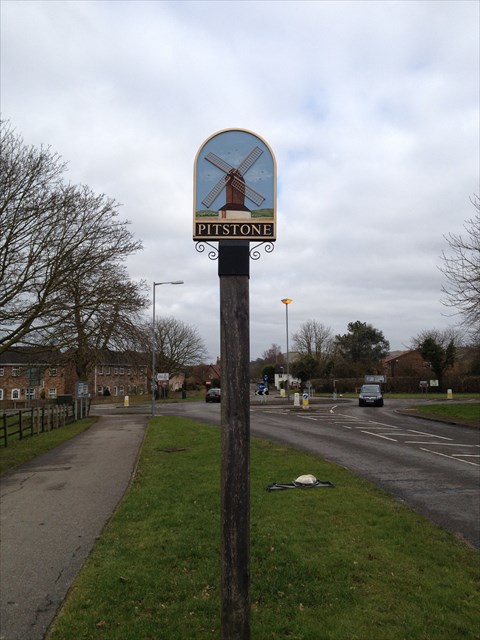
The signs can be made of different materials from fibreglass to wood, from forged steel to stone. They can depict anything from local industry to historical events. The tradition probably stated in Norfolk or Suffolk and has now spread across most of the country so we thought we would base a series on them!
The village name is Anglo Saxon in origin, and means 'Picel's thorn tree'. It was recorded in the Domesday Book of 1086 as Pincelestorne.
Pitstone was given to the abbey at Ashridge by the Earl of Cornwall in 1283. In 1290 King Edward I spent Christmas in Pitstone at the estate that had been given to the abbey, and stayed for five weeks, during which time he held parliament in Ashridge. His stay caused great inconvenience to the local inhabitants of the village, who were legally obliged to keep the king and his court.
The sign depicts the nearby Pitstone Windmill. It is thought to have been first built circa 1627 as this date is carved on part of the framework. This is the earliest date to be found on any windmill in the British Isles. It should be remembered that such a structure would have had to have frequent repairs made to it, so it is quite possible the mill predates 1627.
For many hundreds of years grain grown in the two adjoining villages was ground at the mill into flour. In 1874 the mill was bought by Adelbert Wellington Brownlow Cust, 3rd Earl Brownlow who owned the nearby Ashridge Estate. He subsequently let it to a local farmer, who ran a successful milling business from the mill.
In 1902 the mill was seriously damaged during an enormous gale, damaging it beyond the price of economic repair. Around 1922 the derelict ruined mill was bought from the Ashridge Estate by a farmer whose land was close to the mill. In 1937 he donated it to the National Trust. However, it was not until 1963 that a band of volunteers began to carry out renovations at their own expense. The mill appeared in an episode of The Champions titled The Invisible Man which was filmed in 1967. In 1970, after an interlude of 68 years, the mill once again ground corn.
Today the windmill is open to the public on Summer Sunday afternoons.
The cache is a nano type hidden close by!
If anybody would like to expand this series please do. I would just ask that you let SmokeyPugs know first so they can keep track of the Village Sign numbers and names to avoid duplication.